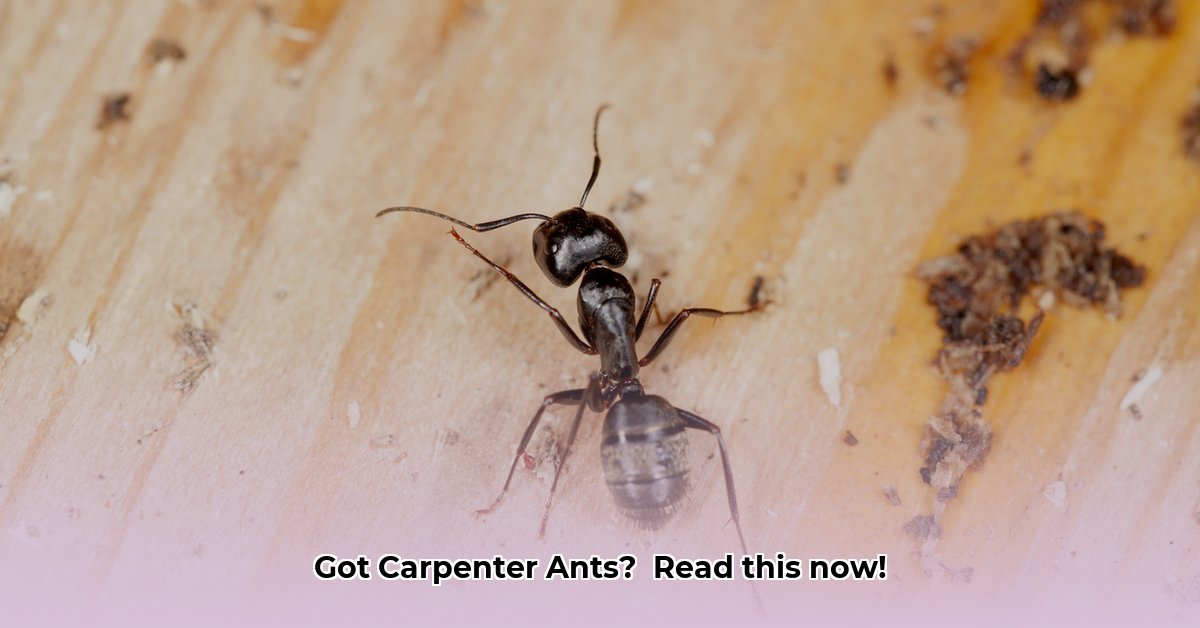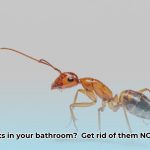Spotting large ants inside can be alarming. This guide helps you identify, control, and prevent ant infestations, focusing on carpenter ants and other common large black ants.
Identifying the Intruders
Seeing big ants indoors, especially black ones, often leads to worries about carpenter ants. While carpenter ants are a serious concern due to their potential for structural damage, other large black ants, like pavement ants, are more of a nuisance. Accurate identification is crucial for effective treatment.
Ant Identification Guide
Here’s a comparison to help distinguish between common large black ants:
| Feature | Carpenter Ant | Pavement Ant | Odorous House Ant |
|---|---|---|---|
| Size | 1/4″ – 1/2″ (queens up to 1″) | 1/8″ – 1/4″ | 1/16″ – 1/8″ |
| Color | Black, sometimes reddish | Black or Brown | Black or Brown |
| Head Shape | Heart-shaped (noticeable indent) | Rounded | Oval |
| Waist | One segment | Two segments | One segment |
| Antennae | Bent (“elbowed”) | Straight | Straight |
| Nesting Habits | Moist, decaying wood | Soil, under objects | Walls, crevices |
| Signs | Frass (sawdust-like debris), rustling in walls | Trails to food | Musty odor when crushed |
Carpenter ants are the primary concern due to their wood-nesting habits. Unlike termites, they excavate wood to create nests, potentially weakening structures. Frass, fine sawdust-like debris, is a key sign of their activity.
Understanding Ant Behavior
Ants invade homes primarily for three reasons: food, water, and nesting sites. They are attracted to sweets, proteins, and even water sources like leaky pipes. Carpenter ants, specifically, seek moist or decaying wood for nesting, making damp areas particularly vulnerable. Current research suggests environmental factors also play a role in ant behavior and infestation likelihood.
Effective Ant Control Strategies
DIY Methods
For minor infestations, simple steps can be effective:
- Cleanliness: Eliminate food sources by promptly cleaning spills, storing food in airtight containers, and regularly sweeping/vacuuming.
- Moisture Control: Repair leaks and address damp areas to reduce ant attraction.
- Entry Point Sealing: Caulk cracks and crevices around windows, doors, and pipes to prevent ant entry.
- Natural Repellents: Substances like vinegar, peppermint oil, or cinnamon may temporarily deter ants by disrupting their scent trails, but their effectiveness for established infestations is limited. Ongoing research explores the efficacy of various natural repellents.
Professional Pest Control
For large infestations or suspected carpenter ant activity, professional pest control is recommended. Experts can:
- Accurately identify the ant species.
- Locate and eliminate the nest(s), even hidden ones.
- Develop targeted treatment plans.
- Access stronger insecticides.
- Implement long-term prevention strategies.
Preventing Ant Infestations
Prevention is crucial for long-term ant control. Consider these preventative measures:
- Regular Inspections: Check for signs of ants and potential entry points.
- Moisture Management: Maintain dry conditions by addressing leaks and ensuring proper ventilation.
- Wood Care: Repair or replace damaged wood to eliminate nesting sites for carpenter ants.
- Firewood Storage: Store firewood away from the house to prevent ant harborage.
- Landscape Maintenance: Trim vegetation away from the foundation to reduce ant access.
Frequently Asked Questions
- What’s the cost of carpenter ant extermination? Costs vary depending on infestation severity, treatment type, and location. Obtain multiple quotes from reputable companies.
- Are natural ant repellents effective? While some natural substances may deter ants, they are rarely sufficient for eliminating established colonies.
- How can I repair carpenter ant damage? Minor damage may be repairable with wood filler. Extensive damage may require structural repairs by a qualified contractor.
By following these steps, you can effectively manage and prevent ant infestations, protecting your home from damage and nuisance. Keep in mind that research on ant behavior and control is ongoing, so staying informed about the latest developments can further enhance your ant-control efforts.
- How Much Do Wellness Programs Cost Businesses To Offer? - December 16, 2025
- Wellness Fair Ideas for Work to Boost Employee Wellbeing - December 15, 2025
- Affordable Employee Wellness Fair Ideas for Any Budget - December 14, 2025
















